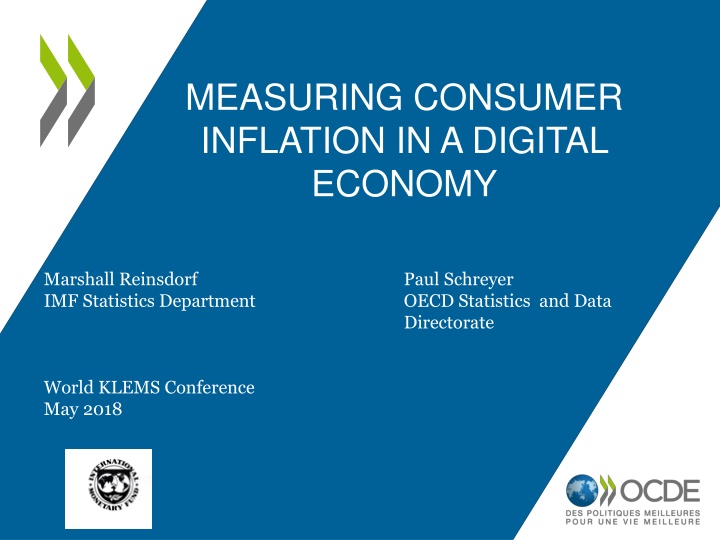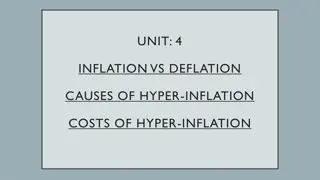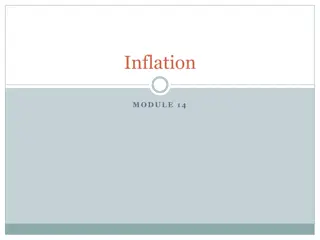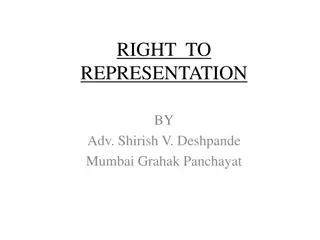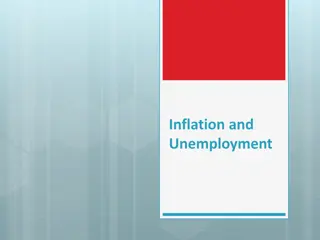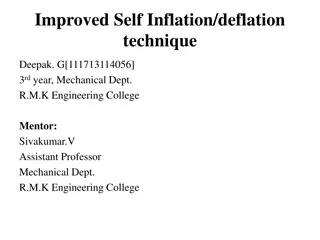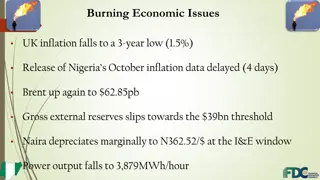Measuring Consumer Inflation in a Digital Economy
The debate surrounds the measurement of consumer inflation in a digital economy, highlighting a pervasive long-term slowing of labor productivity growth. Various explanations are explored, from a shortage of ideas to the digital economy's impact on GDP and productivity figures. The presence of this issue in the public debate is emphasized, underscoring the challenges in accurately capturing the effects of the digital economy on economic metrics.
Download Presentation

Please find below an Image/Link to download the presentation.
The content on the website is provided AS IS for your information and personal use only. It may not be sold, licensed, or shared on other websites without obtaining consent from the author.If you encounter any issues during the download, it is possible that the publisher has removed the file from their server.
You are allowed to download the files provided on this website for personal or commercial use, subject to the condition that they are used lawfully. All files are the property of their respective owners.
The content on the website is provided AS IS for your information and personal use only. It may not be sold, licensed, or shared on other websites without obtaining consent from the author.
E N D
Presentation Transcript
MEASURING CONSUMER INFLATION IN A DIGITAL ECONOMY Marshall Reinsdorf IMF Statistics Department Paul Schreyer OECD Statistics and Data Directorate World KLEMS Conference May 2018
Pervasive long-term slowing of labour productivity growth Total economy, average annual rates of change in % Source: OECD Productivity Compendium 2017
Pervasive long-term slowing of labour productivity growth Total economy, average annual rates of change in % Source: OECD Productivity Compendium 2017
Some explanations Shortage of ideas, innovation slowdown Break-down of the diffusion machine Digital economy not picked up in GDP and productivity figures: The MismeasurementHypothesis
Presence in the public debate Marty Feldstein: I have concluded that, despite the various improvements to statistical methods that have been made through the years, the official data understate the changes of real output and productivity. . Why we re measuring the digital economy in the wrong way The U.S. Underestimates Growth Some optimists argue instead that the problem is one of measurement. Technological progress often raises productivity in ways that statistical agencies struggle to detect Charlie Bean: statistics have failed to keep pace with the impact of digital technology Diane Coyle: The pace of change in OECD countries is making the existing statistical framework decreasingly appropriate for measuring the economy The internet and the productivity slump
the ill-defined nature of the issue has not helped Conceptual vs. Empirical issues Production vs. Welfare Volumes vs. Prices Adjusted measures of consumer inflation can capture many of these issues
Consumer prices and welfare effects of digitalisation
Possible welfare effects 1. Quality change in existing product types 2. Appearance of truly novel products 3. Appearance and use of free products (a) Quality change in existing digital products through evolving characteristics embodied in new varieties of digital products (e.g. computers) e.g., smartphones e.g., free communication services through apps (b) Digital replacement of non- digital products (e.g., streaming services replacing CDs) (c) Improved variety selection among products, digital and other (e.g., clothing, books)
1. Quality change in existing product types a) Appearance of new models/varieties of existing products and new products b) Digital replacements c) Improved variety selection How should new varieties be linked in? Explicit quality adjustment? When should new varieties be linked in? Worst case scenarios
2. Truly novel products Theory: estimate a reservation price to capture initial welfare change from innovation Problems: Estimation of reservation prices in practice Communication/user acceptance Of interest for welfare measurement, but much less practical for official price index
3. Free products Transaction price = 0 excluded from price index Shadow price > 0 Implicit transaction (advertising, user data) Value of time (opportunity cost) Willingness to pay Imputation? Consistency with treatment of other nonmarket consumption (child care, cooking,...) Estimating shadow price in practice Conclusion: not practicable for official index, except at point of appearance as free replacement (case 1. (b))
Simulating effects: Quality change in existing product types
Method 145 private final consumption expenditure items affected possibly affected not affected 34 OECD countries, expenditure weights for 2005 and 2015 (national accounts) Examining pessimistic scenarios for upward bias in deflators base on literature e.g., Byrne and Corrado (2015, 2017a, 2017b, 2017c) Abdirahman et al. (2017) Greenstein and McDevitt (2010) Byrne, Fernald and Reinsdorf (2017) or assumptions
(a) Quality adjustments in deflators of existing digital products Digital products where advances in technology are causing rapid quality improvement Affected: Example: computers and software Assumption over-estimation of the price change 10 % points/year for communication services 5 % points/yearother affected products Possibly affected: Example: motor vehicles Assumption: 2 % points/year over-estimation of the price change
(b) Digital replacements Free or cheaper replacement for a more expensive item that used to be the only alternative Affected: Example: passenger transport Assumption: 5 % points/year over- estimation of the price change Possibly affected: Example: books Assumption: 2 % points/year over- estimation of the price change
(c) Better selection of varieties Expanded access to varieties + reduced search costs for finding the best match for one s individual needs and tastes Affected: Many products, e.g., clothing, furniture, even restaurant choices Assumption: 0.3 % points/year over-estimation of the price change
Pessimistic Bounds for Potential Effects on PCE Deflator Assumed Error in Growth Rate of Prices (% points per year) 2005 Weight (average across 34 OECD countries) (%) 2015 Weight (average across 34 OECD countries) (%) Adjustment to Growth Rate of Consumption Deflator, 2005 Weights (% points) Adjustment to Growth Rate of Consumption Deflator, 2015 Weights (% points) Significant potential for under adjustment for quality change ( affected products ) except communication services 5 0.8 0.1 -0.04 0.05 10 2.7 2.4 -0.27 -0.24 Communication services Some potential for under adjustment for quality change ( potentially affected prods. ) Potential effect of under adjustment for quality change Significant replacement by digital products ( affected products ) Some replacement by digital products ( potentially affected products ) Potential effect of digital replacements Potential for improved variety selection 2 7.4 6.2 0.15 0.12 0.46 0.41 5 2.4 1.0 0.12 0.05 1 5.8 5.7 0.06 0.06 0.18 0.11 0.3 16.8 15.6 0.05 0.05 All potential effects 35.9 31.5 0.69 0.58
Conclusion Digital economy makes price measurement harder and raises questions about possibly neglected welfare effects (positive and negative) But not every welfare change belongs in official price index although no firm line here purpose of index, feasibility, credibility count Pessimistic adjustment: ~0.6 % points/year, but declining Not insignificant, but can t explain slow GDP and productivity growth
Additional slides Expenditure weights
Affected or Potentially Affected by Under Adjustment for Quality 2005 Weights (% points) 2015 Weights (% points) Affected: Telecommunication equipment Telecommunication services* Information processing equipment and software Photographic/cinematographic equipment* Potentially Affected: 0.21 2.71 0.41 2.38 0.45 0.49 0.13 0.09 Major and small HH appliances Equipment for the reception and recording of sound and vision* Motor vehicles and parts Games, toys and hobbies 1.12 0.95 0.70 5.08 0.48 0.53 4.26 0.42 * Includes effects of digital replacement
Affected or Potentially Affected by Low-Cost Digital Replacement 2005 Weights (% points) 2015 Weights (% points) 0.31 0.22 0.11 0.68 1.04 0.30 0.12 0.04 0.45 0.07 Taxi or hired car with driver Pre-recorded recording media Unrecorded recording media Newspapers and periodicals Film developing and printing Potentially Affected: Books Passenger transport by air Package holidays Accommodation services Maintenance and repair of dwelling Postal services Jewellery, clocks and watches FISIM 0.47 0.68 0.81 1.41 0.46 0.11 0.43 1.42 0.33 0.89 0.93 1.56 0.41 0.09 0.39 1.46
Improved Variety Selection due to Expanded Access or Better Information 2005 Weights (% points) 2015 Weights (% points) 5.16 4.45 Cloth and clothing Furniture, floor coverings, HH textiles, and repairs thereof Games, toys and hobbies Newspapers and periodicals 2.50 0.48 0.68 0.47 1.98 0.42 0.45 0.33 Books 1.83 1.69 Other durable and nondurable HH goods Restaurants, cafes and dancing establishments Accommodation services Maintenance and repair of dwelling 3.84 1.41 0.46 4.26 1.56 0.41
